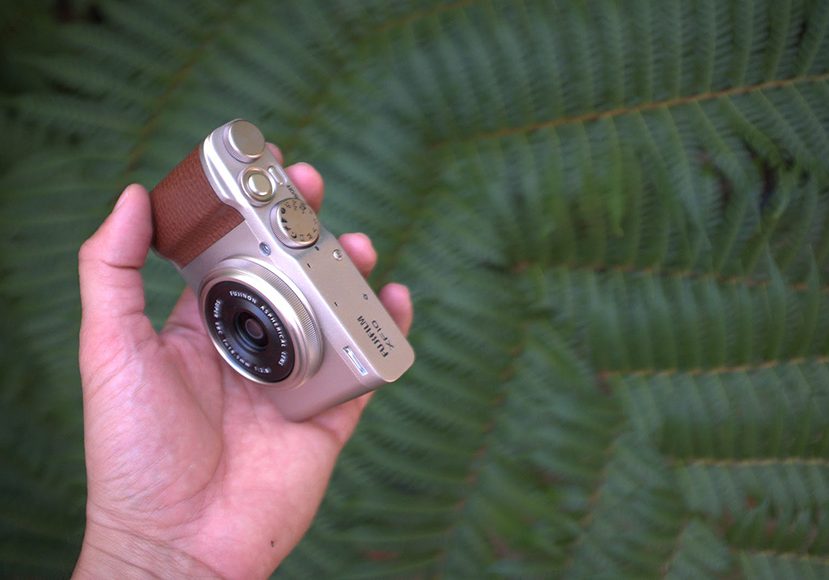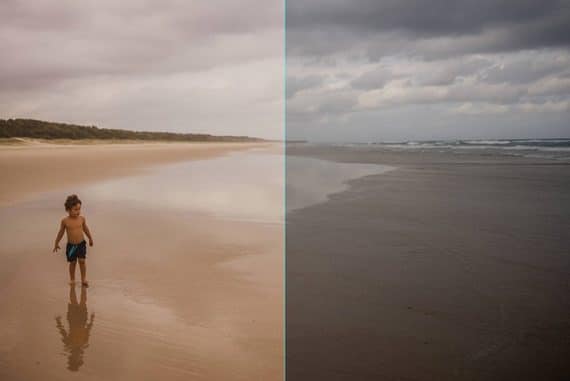
What Does SOOC Mean in Photography?
Are you an advocate of getting your photos right in-camera? Or do you prefer to use software to make them look their best? Let's discuss SOOC in photography.
Learn | By Jeff Collier | Last Updated: March 18, 2024
SOOC is a photographer’s abbreviation that stands for “Straight Out Of Camera.”
It refers to images that are shown exactly as they were captured by the camera, with no post-processing applied whatsoever.
SOOC is often used by photographers to showcase their in-camera skills, including their ability to accurately judge and set exposure, white balance, and other parameters at the time of shooting.
It’s also used in situations where the authenticity of a photo is important, like in photojournalism or certain photography contests.
What is the Importance of SOOC with Digital Cameras?


As a professional photographer, I think SOOC images are just as important as edited images.
My strength with photography has never been in using editing software.
Post-production is important in finalising your RAW file, an edited image doesn’t always convey how a scene or a subject really looked.
Similarly, someone can be highly skilled at editing images, but poor at taking photos.
This is where SOOC is interesting and important for photographers. Here’s why:
- Authenticity: SOOC images are authentic representations of what the camera captured, without alterations. This can be particularly important in fields like photojournalism, where ethical guidelines often require images to accurately represent the scene without digital manipulations.
- Skill Development: Using SOOC as a challenge can enhance a photographer’s skills. It encourages them to get the exposure, composition, white balance, and other settings right in-camera, rather than relying on post-processing to correct mistakes.
- Time-Saving: Post-processing can be a time-consuming part of digital photography. Shooting with the intent of producing SOOC images can streamline the workflow by eliminating or reducing the need for editing.
- Consistency: When images are produced SOOC, they often have a consistent look and feel, especially when taken under the same lighting conditions. This consistency can be beneficial for certain projects or styles of photography.
- Transparency: In photography competitions or certain professional settings, providing SOOC images can offer transparency, demonstrating that the image results are from photographic technique and not digital manipulation.
What are the Pros and Cons of SOOC?
Here are some of the pros and cons of Straight Out Of Camera (SOOC) photography:
| Pros | Cons |
|---|---|
| Authenticity: SOOC images are untouched and represent exactly what the camera captured. | Limited Flexibility: SOOC images offer less room for correction or artistic interpretation in post-production. |
| Skill Development: Shooting for SOOC can improve in-camera skills, including exposure, white balance, and composition. | Perfection Required: Achieving good SOOC photos requires perfect in-camera settings, which can be difficult in unpredictable lighting or fast-paced scenarios. |
| Time-Saving: SOOC photos can streamline the workflow by reducing or eliminating the need for post-processing. | Potential Quality Loss: Some aspects of image quality, such as noise reduction or dynamic range optimization, might be better handled in post-processing. |
| Consistency: SOOC images often have a consistent look and feel, especially when shot under the same conditions. | Dependent on Camera Quality: The quality of SOOC images is heavily dependent on the camera’s capabilities, particularly its sensor and processing engine. |
| Transparency: Providing SOOC images can demonstrate transparency in photography competitions or professional settings. | Less Creative Control: With SOOC, you’re limited to the creative controls your camera provides and can’t take advantage of the wide range of manipulations available in post-processing software. |
The SOOC vs. Post-Processing Debate

Leica Q2 SOOC JPEG (Max Contrast, Saturation & Sharpness) | 1/400 f/1.7 ISO100
The debate between Straight Out Of Camera (SOOC) photography and post-processing is a long-standing one within the photographic community.
Purists argue that SOOC meaning straight-out-of-the-camera photos would be authentic and as close to reality as possible. However, some would counter that with the fact that photos are edited by a processing engine within the camera.
It often boils down to a matter of personal preference, philosophy, and the demands of the specific genre of photography.
Advocates of SOOC photography (like myself) argue that it promotes authenticity and skill.
I believe that a good photographer should be able to use their knowledge of the camera and the environment to capture a great photo without the need for digital manipulation.
SOOC is about getting the image right at the moment of capture, thereby showcasing technical abilities.
The time-saving element of SOOC, avoiding lengthy post-processing workflows, is also a significant advantage.
On the other hand, supporters of post-processing see it as an integral part of the digital photography process.
To them, the ability to adjust and enhance an image after it has been captured opens up a world of creative possibilities that can transform a good photo into a great one.
Popular photo editing software like Adobe Lightroom and Photoshop is there to be used.
There’s an art to effective post-processing that can bring a photographer’s vision to life in ways that SOOC can’t match.
How Much Do You REALLY Know About Photography?! 🤔
Test your photography knowledge with this quick quiz!
See how much you really know about photography...

It’s worth noting that this debate doesn’t have a definitive answer; both SOOC and post-processing have their place.
Some photographers (myself included) have found a middle ground, using careful in-camera techniques to minimize the amount of post-processing required while still leaving some room for tweaks in editing software.
Ultimately, it’s about finding a balance that suits the individual photographer’s style, goals, and the specific requirements of their work.
What’s the Difference Between RAW vs SOOC?
RAW refers to a file format that allows for extensive post-processing, while SOOC is a concept or practice of using photos exactly as they were captured, without additional alterations or enhancements in editing software.
Unlike JPEG or other compressed image formats, RAW files are not processed within the camera, which means they contain more detailed information and provide greater flexibility when it comes to post-processing.
RAW files are larger and need to be processed using software like Adobe Lightroom or Photoshop before they can be shared or printed.
Download unedited RAW files to practice editing for yourself.
SOOC, on the other hand, refers to images that are presented exactly as they were captured by the camera, with no post-processing alterations.
A SOOC photo can be either a JPEG or a RAW file. If it’s a JPEG, the camera has already applied some processing like sharpening, noise reduction, and color correction based on the settings you selected when taking the photo.
If it’s a RAW file viewed directly on the camera or through software with no adjustments made, it’s also considered a SOOC image.
10 Tips for SOOC Photography
- Know Your Gear: Understand all the settings and features of your camera so you can adjust as needed on the spot.
- Master Exposure: Learn about the exposure triangle (aperture, shutter speed, ISO) to control the light in your photos.
- Nail Your White Balance: Get the right white balance setting to accurately reproduce the colors in the scene.
- Utilize Picture Styles: Consider using your camera’s picture styles or profiles to get the desired color and contrast.
- Shoot in RAW: This gives you more data to work with if minor adjustments are needed. See also RAW vs JPEG
- Consider Lighting: Good lighting is key to reducing noise and bringing out details.
- Pre-visualize: Have a clear idea of what you want your final image to look like before you press the shutter.
- Practice Composition: Use compositional rules to create balanced and engaging images.
- Use the Histogram: It can help you ensure proper exposure and avoid clipped highlights or shadows.
- Be Patient and Practice: SOOC requires time, patience, and lots of practice to perfect.
Over To You
So, now that you understand what is SOOC in photography, what do you think about the whole SOOC vs. Edited Images debate?
Do you present your photography straight out of camera, or do you prefer to edit photos to make them look their best?
Let us know down in the comments.

Check out these 8 essential tools to help you succeed as a professional photographer.
Includes limited-time discounts.













